Introduction
Spain, with its diverse climates, extensive vineyard acreage, and rich history, has long been recognized as a mecca of wine production. Spanish wines express a beautiful harmony between tradition and innovation, with a rich palette that reflects the country’s varied geography and soil. While the country boasts an impressive range of both white and rosé wines, Spain’s red wines particularly stand out for their distinct flavor profiles, robust body, and aging potential. This article will serve as an introductory guide to twelve of the best Spanish red wines. From the powerful, velvety reds of the Rioja region, the fruity, full-bodied offerings of Ribera del Duero, to the inky, intense monastrell wines of Jumilla, we’ll explore the must-try wines that bear the heart and soul of Spain in every sip. This is your beginner’s guide to the fascinating world of Spanish red wines, set to help you discover, appreciate, and enjoy the vinous gems of Spain.

Key Takeaways
- Tasting and Appreciation: Understanding the basics of wine tasting can enhance your appreciation of Spanish red wines. This involves observing the wine’s appearance, smelling its aromas, tasting its flavors, and evaluating the overall impression.
- 12 Best Spanish Red Wines: We highlight 12 standout Spanish red wines, offering a mix of styles and regions:
- La Rioja Alta Gran Reserva 904
- Vega Sicilia Único
- Alvaro Palacios L’Ermita
- El Nido Clio
- Numanthia Termanthia
- Pesquera Reserva
- Marques de Murrieta Castillo Ygay Gran Reserva Especial
- Bodegas Muga Prado Enea Gran Reserva
- Clos Mogador
- Dominio de Pingus PSI
- Juan Gil Monastrell
- Pintia Toro
- Buying Spanish Red Wines: Spanish red wines can be purchased at local wine stores, supermarkets, online retailers, or directly from the wineries. Choosing the right wine involves understanding your taste preferences and asking for recommendations as needed.
- Storing and Serving: Proper storage and serving practices can enhance the taste of your Spanish red wines. Key factors include maintaining the right temperature, humidity, light exposure, and position for storage, along with serving at the appropriate temperature and considering decanting.
- Wine Tourism in Spain: Spain offers a wealth of wine tourism opportunities, with tours, tastings, and experiences for all levels of wine enthusiasts. Some top wineries for red wine lovers include Bodegas La Rioja Alta, Vega Sicilia, Alvaro Palacios, Bodegas El Nido, and Bodega Numanthia.
- Personal Exploration: The world of Spanish red wines is diverse and inviting. The key to discovering your favorite wines is through personal exploration and tasting widely. Each bottle offers a unique expression of its region, terroir, and winemaker’s artistry.
What Makes Spanish Red Wines Unique
Spanish red wines are renowned for their unique characteristics that set them apart on the global wine stage. While each wine region in Spain has its distinct style and flavor profile, a few common threads weave the country’s red wines together.
- First, the use of indigenous grape varieties, such as Tempranillo, Garnacha, and Monastrell, gives Spanish red wines an identity that is unmistakably their own.
- Additionally, Spanish wine laws mandate certain aging requirements before wines can be labeled as Reserva or Gran Reserva, which is reflected in the depth and complexity found in these bottles.
- Lastly, the varied microclimates and terrains across the country, from the cool, lush valleys to the hot, arid plains, influence the balance of acidity, fruit, and tannin structure in the wines, delivering a wide array of taste experiences to the wine enthusiast.
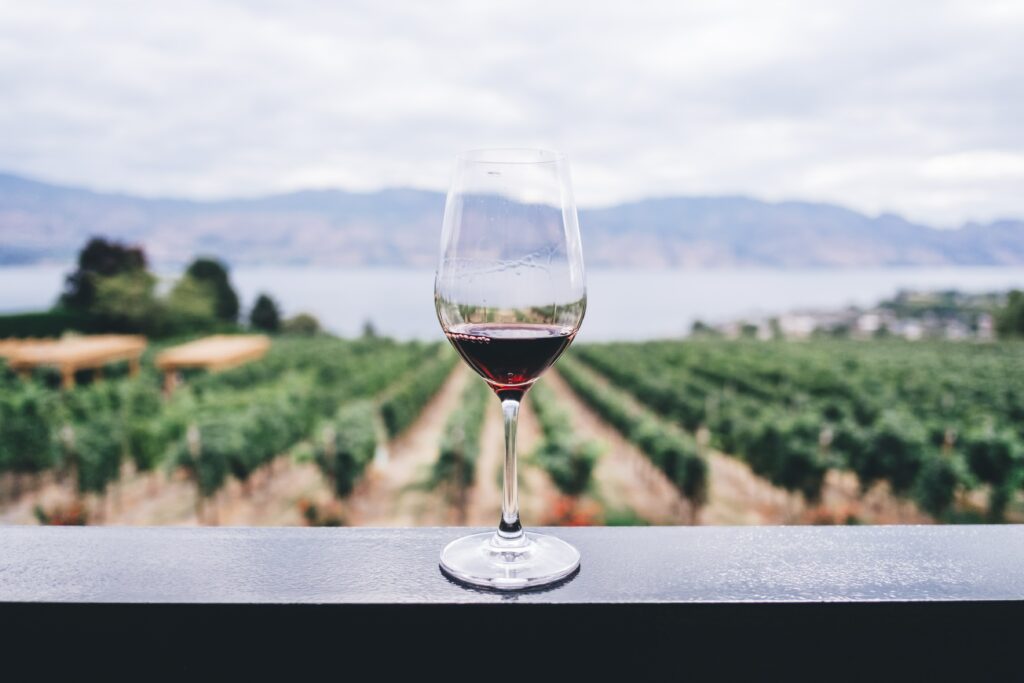
Spanish Wine Regions Known for Red Wine
Spain boasts several renowned wine regions, each with its distinct qualities and celebrated for its contribution to the country’s diverse red wine portfolio.

- Rioja: Known as Spain’s premier wine region, Rioja produces elegant, age-worthy red wines primarily from the Tempranillo grape. Wines from this region are known for their structure and balance, and often exhibit flavors of cherry, plum, and leather.
- Ribera del Duero: Another prestigious region that’s known for producing high-quality, full-bodied red wines, predominantly from Tempranillo. The wines from Ribera del Duero often have rich flavors of black fruit and notes of spice and are well-known for their potential to age gracefully.
- Priorat: This region has gained international acclaim for its powerful, mineral-driven reds, primarily crafted from old vine Garnacha and Cariñena. Priorat wines are often characterized by their intense concentration and high alcohol content.
- Jumilla: Located in southeastern Spain, Jumilla is renowned for producing robust, fruit-forward wines primarily from the Monastrell grape. The region’s hot, dry climate contributes to the wines’ deep color, high tannin content, and pronounced flavors of dark fruit.
- Toro: This region is known for its robust, muscular wines, made predominantly from a local clone of Tempranillo called Tinta de Toro. These wines are recognized for their dark fruit flavors and significant tannin structure.
These regions represent just a glimpse into the diverse world of Spanish red wines. Each bottle tells a story of its origin, presenting a unique opportunity to explore Spain’s rich viticultural heritage and varied terroir.
The 12 Best Spanish Red Wines
1. La Rioja Alta Gran Reserva 904
La Rioja Alta Gran Reserva 904 is a classic wine from the Rioja region, mainly composed of Tempranillo with a small portion of Graciano.
Tasting notes: This wine boasts an intense ruby color and complex aromas of ripe fruit, cocoa, and spice with an underpinning of well-integrated oak. On the palate, it’s balanced and velvety, with a long finish. A perfect match for lamb dishes or mature cheeses.

2. Vega Sicilia Único
Vega Sicilia Único hails from the Ribera del Duero region. It’s primarily made from Tempranillo, often with a touch of Cabernet Sauvignon.
Tasting notes: Displaying a vibrant ruby color, this wine exudes aromas of black fruit, tobacco, and hints of baking spices. It is full-bodied, with a firm tannin structure, making it ideal for pairing with hearty beef dishes or game.
3. Alvaro Palacios L’Ermita
Alvaro Palacios L’Ermita is an iconic wine from the Priorat region, predominantly made from old-vine Garnacha.
Tasting notes: This wine impresses with its rich, dark fruit flavors, mineral notes, and a hint of spice. Powerful and full-bodied, it pairs well with strong flavored dishes, such as braised beef or game.
4. El Nido Clio
El Nido Clio, from Jumilla, is primarily composed of Monastrell, with a touch of Cabernet Sauvignon.
Tasting notes: This wine is known for its deep, inky color and robust flavors of blackberry, plum, and pepper. The full-bodied palate and ripe tannins make it an excellent companion to barbecue or spicy cuisine.
5. Numanthia Termanthia
Numanthia Termanthia hails from the Toro region and is made entirely from Tinta de Toro, a local clone of Tempranillo.
Tasting notes: The wine exhibits rich, dark fruit aromas, a full-bodied palate, and hefty tannins. The robust flavors stand up well to hearty stews or grilled steaks.
6. Pesquera Reserva
Pesquera Reserva is a celebrated wine from the Ribera del Duero region, made entirely from Tempranillo.
Tasting notes: Showcasing deep cherry color, this wine offers rich flavors of dark fruit and chocolate, supported by firm tannins. It’s an ideal partner for dishes such as roast lamb or hearty stews.

7. Marques de Murrieta Castillo Ygay Gran Reserva Especial
This is a flagship wine from the Rioja region, crafted predominantly from Tempranillo, with a small percentage of Mazuelo.
Tasting notes: The wine, which showcases red and black fruit flavors complemented by notes of spice and a hint of vanilla, pairs perfectly with dishes like roasted duck or mushrooms.
8. Bodegas Muga Prado Enea Gran Reserva
Prado Enea Gran Reserva, a classic from Rioja, is composed mainly of Tempranillo, with smaller portions of Garnacha, Mazuelo, and Graciano.
Tasting notes: Exhibiting flavors of ripe red fruits, spice, and a touch of oak, this wine’s elegant structure complements a variety of dishes, particularly those with lamb or pork.
9. Clos Mogador
Clos Mogador hails from the Priorat region and is a blend of Garnacha, Cariñena, Syrah, and Cabernet Sauvignon.
Tasting notes: With intense dark fruit, floral notes, and an underpinning of minerality, this full-bodied wine is perfect when paired with roasted meats or game.
10. Dominio de Pingus PSI
PSI is a product of the Ribera del Duero region, crafted from old vine Tempranillo.
Tasting notes: The wine exhibits notes of dark fruit, chocolate, and spice. Its balanced tannins and long finish make it a great match for dishes like roast beef or venison.
11. Juan Gil Monastrell
Juan Gil Monastrell, from Jumilla, is crafted entirely from the Monastrell grape.
Tasting notes: This wine, with its ripe black fruit flavors and hints of cocoa and leather, pairs well with dishes like barbecue ribs or grilled sausages.
12. Pintia Toro
Pintia, from the Toro region, is made entirely from Tinta de Toro.
Tasting notes: The wine offers bold flavors of blackberry, plum, and tobacco. Its robust structure and rich, velvety texture make it an ideal partner for hearty, meat-based dishes, like steak or roast lamb.
How to Taste Red Wine
The art of wine tasting involves several stages – appearance, smell, taste, and conclusion – each playing a crucial role in the overall appreciation of the wine.
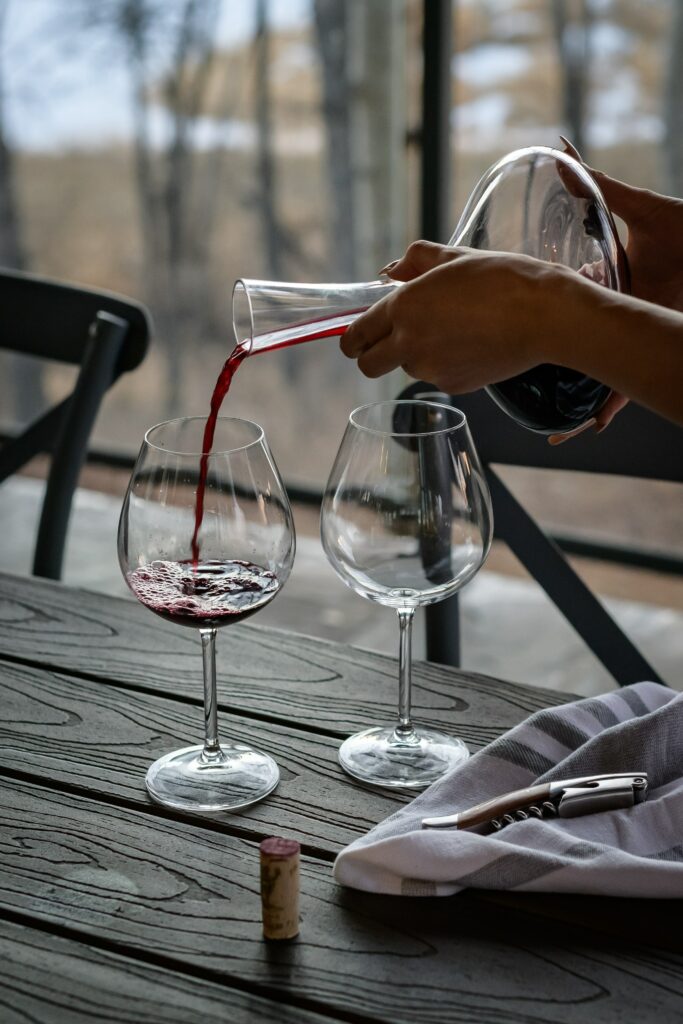
- Appearance: Pour a small amount of wine into a glass, hold it up against a white background, and observe its color. The hue can provide clues about the wine’s age and concentration. Generally, Spanish reds can range from vibrant ruby to a deep garnet, with some mature wines taking on a tawny hue.
- Smell: Swirl the wine gently in the glass to aerate it and release its aromas. Then take a moment to inhale deeply. What do you smell? Spanish red wines can display a wide array of aromas, from ripe berries and plum to notes of vanilla, tobacco, or spices, particularly in those aged in oak.
- Taste: Take a small sip and let the wine cover your palate. Try to identify the balance between sweetness, acidity, tannins, and alcohol. Take note of the flavors – do they align with the aromas you detected earlier? Are there new flavors that emerge as you taste? The finish – how long the taste lingers after swallowing – can also tell you much about the wine’s quality.
- Conclusion: This is your overall impression of the wine. Did you enjoy it? What stood out most to you? Was there good balance and complexity? It’s a personal reflection and helps form your wine preferences over time.
Pairing Red Wine with Food
Pairing Spanish red wine with food can elevate your dining experience as the right match can enhance the flavors of both the dish and the wine. As a general rule, heavier, full-bodied wines like those from Ribera del Duero or Toro pair well with rich, meaty dishes, such as steak or lamb, due to their ability to counterbalance the richness of the food. Lighter, more delicate reds, such as young Rioja wines, pair well with lighter meats, like chicken or pork, and even some fish dishes. The fruity, medium-bodied reds of Jumilla can be great with a range of dishes, including grilled vegetables, pasta, and spicy foods. Remember, these are only guidelines and the best pairing is one that brings you the most enjoyment.

Where to Buy Spanish Red Wines
Spanish red wines can be found in various retail locations and online platforms, with some tips to ensure you get the best for your budget and preferences.
- Local Wine Stores: Well-stocked wine stores generally carry a broad selection of Spanish wines. It’s a good idea to build a relationship with the staff or the sommelier, who can guide you through their selection based on your preferences and budget.
- Supermarkets: Large supermarkets often have an extensive wine section, including a range of Spanish wines. While the selection may not be as curated as a dedicated wine store, it’s a convenient place to find widely-distributed Spanish brands.
- Online Wine Retailers: Online retailers offer an expansive range of wines, often at competitive prices. Websites like Wine.com, Vivino, or The Wine Society have a good selection of Spanish red wines. Be sure to check the shipping policy and any customer reviews before purchasing.
- Direct from Wineries: Some wineries offer direct sales through their websites, which can be an excellent way to access limited-production wines that may not be available in retail stores.
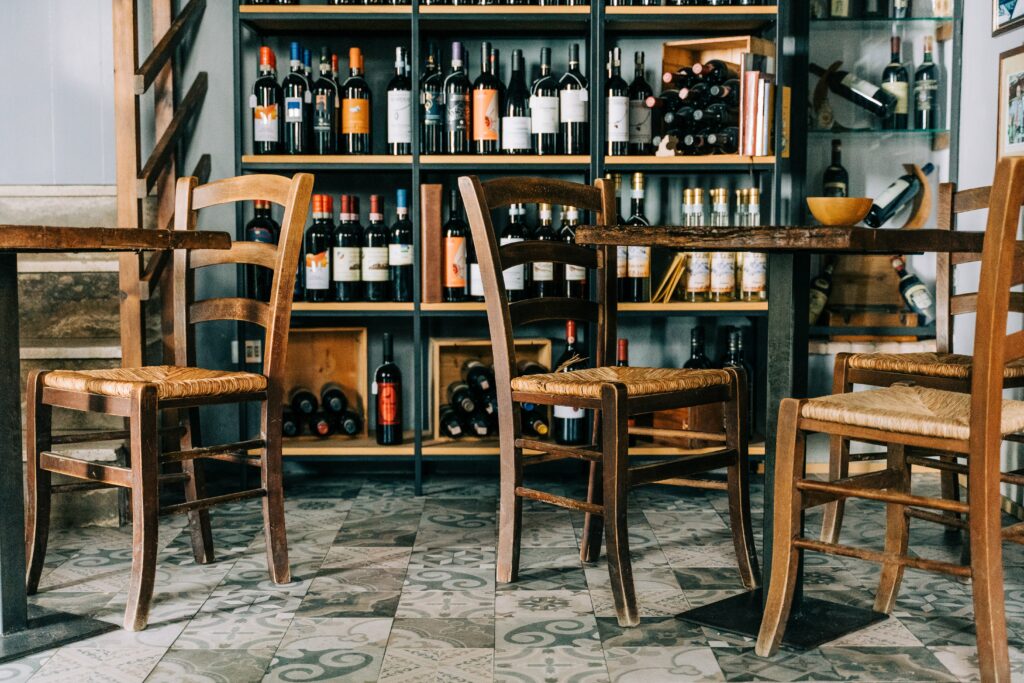
How to Choose the Best Wine Based on Personal Taste Preferences
Choosing the right Spanish red wine depends on your taste preference. Here are some general guidelines to follow:
- If you enjoy full-bodied, robust wines with strong tannins, consider wines from Ribera del Duero, Toro, or Priorat.
- If you prefer medium-bodied wines with a balance of fruit, tannin, and acidity, look for wines from Rioja or Jumilla.
- If you enjoy lighter-bodied, fruit-forward wines, young (Joven) wines from various regions, including Rioja or Navarra, can be a good choice.
Remember, the best way to discover what you enjoy is to taste widely. Don’t hesitate to ask for recommendations from knowledgeable staff at your local wine store, or consider joining a wine tasting or club to further explore the world of Spanish red wines.
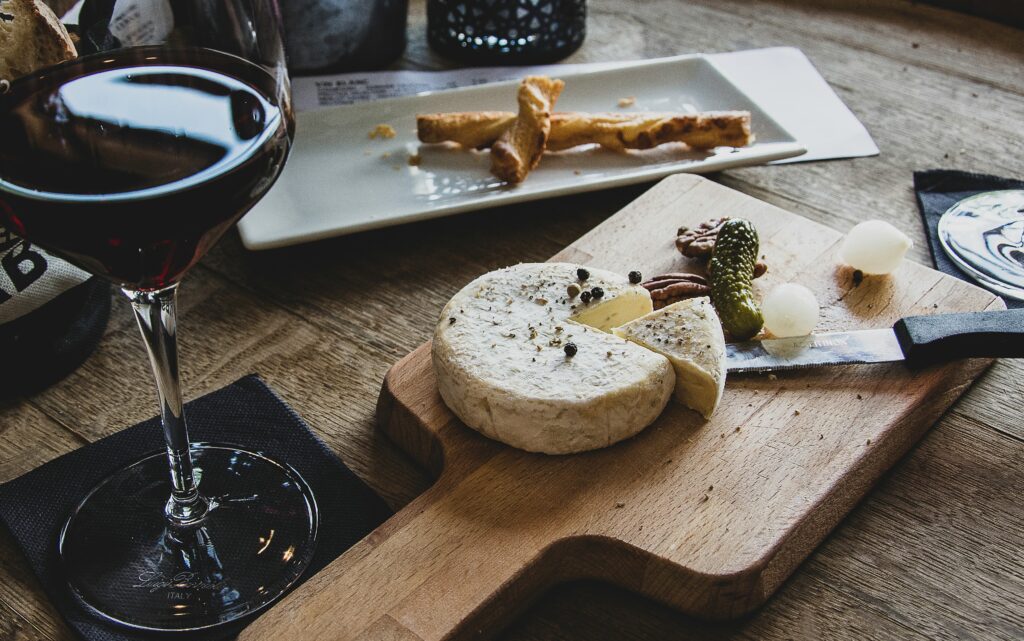
Storing Spanish Red Wines
Proper storage is key to maintaining and even enhancing the quality of your Spanish red wines. Here are some essential tips:
- Temperature: Wine should be stored at a consistent, cool temperature, ideally between 12-18°C (53-64°F). Significant temperature fluctuations can damage the wine and lead to premature aging.
- Humidity: Moderate humidity helps keep the cork from drying out and prevents air from entering the bottle. A humidity level of about 70% is considered ideal, but anywhere from 50-80% is typically safe.
- Light: Wines are sensitive to light, particularly direct sunlight, which can degrade and prematurely age the wine. Always store your wines in a dark place.
- Position: Keep your wines horizontally. This helps keep the cork moist, preventing it from drying out and letting air into the bottle.
- Vibration: Avoid storing wines in places with constant vibration, such as on top of a refrigerator. Vibration can disturb the sediment in the wine and may accelerate chemical reactions leading to premature aging.
Serving Temperature and Decanting
- Temperature: The ideal serving temperature for Spanish red wines varies depending on their body and style. Light-bodied reds are best served slightly cooler, around 12-14°C (54-57°F). Medium-bodied reds shine at around 14-16°C (57-61°F), while full-bodied reds are typically served at 16-18°C (61-64°F).
- Decanting: Decanting can enhance the tasting experience, especially for full-bodied, tannic wines. The process of decanting helps to aerate the wine, releasing its aromas and softening tannins. Young, bold wines and old, sediment-laden wines benefit most from decanting. As a general rule, decant younger wines for 1-2 hours and older wines just before serving. However, decanting times can vary based on the wine’s structure and age, so you might need to experiment to find what works best for each bottle.
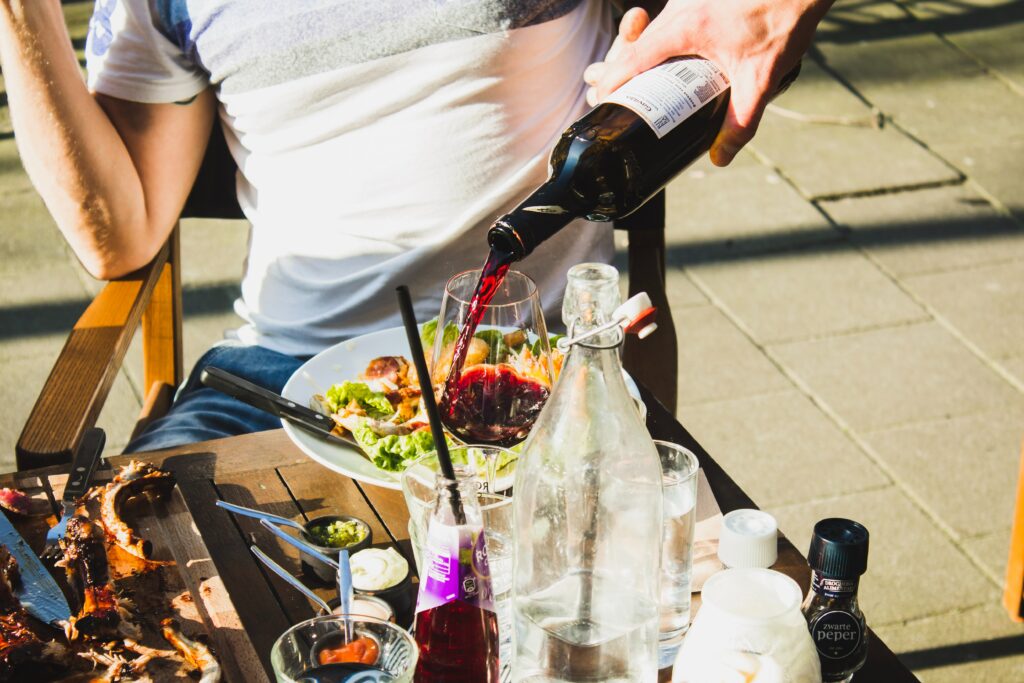
Remember, these guidelines are starting points and can be adjusted to your personal preference. The most important thing is to enjoy the process and the wine.
Exploring Wineries: Wine Tourism in Spain
Spain’s rich viticultural heritage, coupled with its picturesque landscapes, diverse culinary traditions, and warm hospitality, makes it a sought-after destination for wine tourism. Each wine region offers unique experiences, from guided vineyard tours and tastings to wine-focused culinary workshops, and even stays in wine-themed hotels or ancient winery estates. Whether you’re a casual wine enthusiast or a seasoned oenophile, Spain’s wine country promises an immersive journey into the heart of Spanish wine culture.
Top Wineries for Red Wine Lovers
- Bodegas La Rioja Alta (Rioja): This winery offers a look into Rioja’s historic wine-making traditions. Their tour provides insights into the production of their renowned Reservas and Gran Reservas.
- Vega Sicilia (Ribera del Duero): Considered one of Spain’s most prestigious wineries, Vega Sicilia offers exclusive tours by appointment, where visitors can taste their highly-acclaimed red wines.
- Alvaro Palacios (Priorat): As one of the pioneering wineries in the resurgence of Priorat, a tour here provides an in-depth understanding of the unique llicorella soil and old-vine Garnacha and Cariñena.
- Bodegas El Nido (Jumilla): Known for its full-bodied Monastrell wines, this winery’s visit provides a look into the region’s dry, hot climate and unique viticultural challenges.
- Bodega Numanthia (Toro): This winery offers a closer look at the tough conditions under which the Tinta de Toro grape thrives. Their tour provides a comprehensive overview of the region’s unique terroir and winemaking philosophy.
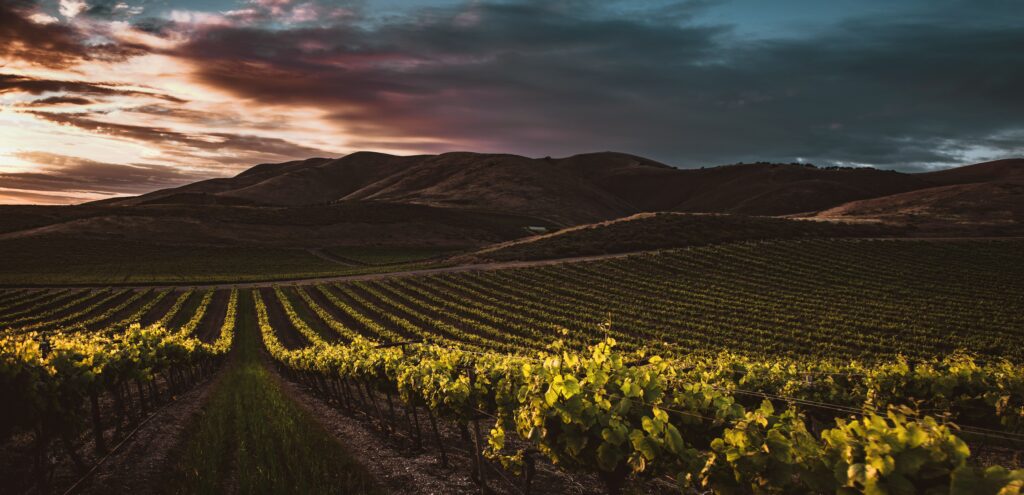
Remember, each winery visit requires prior booking, so plan your trip in advance. Also, consider hiring a local guide or joining a wine tour group, which can offer a wealth of local knowledge and ensure a smooth and enjoyable experience.
Conclusion
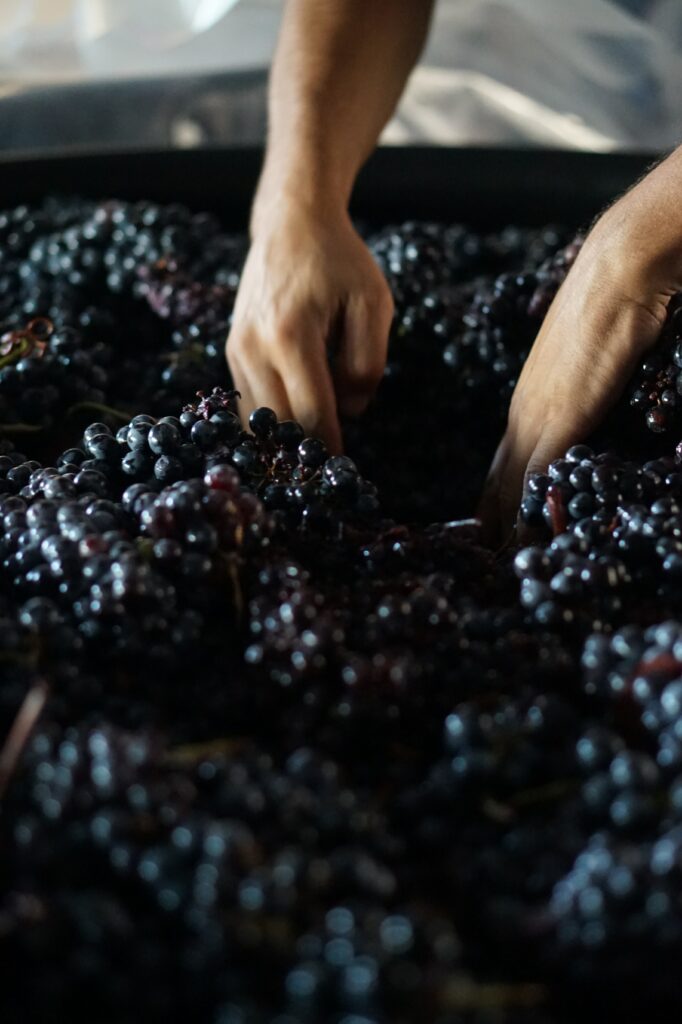
Spanish red wines hold a position of global renown, offering an extraordinary blend of tradition, diversity, and quality. From the Tempranillo-driven classics of Rioja and Ribera del Duero to the robust Monastrell wines of Jumilla and the unique Garnacha and Cariñena blends of Priorat, Spanish red wines provide an unparalleled spectrum of flavors and styles. Whether you’re a seasoned oenophile or a wine novice, the journey through Spanish red wines promises a wealth of discovery and enjoyment.
Remember, the world of wine is subjective, and the ‘best’ wine is ultimately the one you enjoy the most. So, be adventurous and step outside of your comfort zone. Try different styles, from different regions, made from different grape varieties. Each bottle of Spanish red wine tells a story of its unique terroir, tradition, and the people who made it.
Whether you are visiting the wineries in person, tasting them at your local wine shop, or enjoying a bottle at home, let your curiosity guide you. No doubt, you’ll discover new favorites, deepen your appreciation for Spanish red wines, and enrich your overall wine experience. Cheers to your journey through the captivating world of Spanish red wines!
FAQ
Why is Spanish wine the best?
Spanish wine is often considered among the best due to several factors. Firstly, Spain has a diverse range of microclimates and terroirs, allowing for a broad spectrum of wine styles. Secondly, Spain is home to a host of indigenous grape varieties, offering unique flavors that cannot be replicated elsewhere. The country’s rich wine-making tradition and innovation further enhance the quality and uniqueness of its wines. Moreover, Spanish wines are known for their excellent value, delivering high-quality wines at various price points.
What is the most popular Spanish wine brand?
In terms of popularity and global recognition, Bodegas Vega Sicilia from Ribera del Duero and Bodegas La Rioja Alta from Rioja are two of the most renowned Spanish wine brands. However, it’s worth noting that Spain is home to a multitude of wineries and brands that produce excellent wines, and the “most popular” can vary depending on the context and specific market.
Why is Rioja wine so good?
Rioja wines are considered exceptional due to the region’s ideal wine-growing conditions and the winemaking traditions that have been refined over centuries. The Tempranillo grape, the main variety in Rioja, thrives in the region’s diverse soils and climate, producing wines with a balance of fruit, acid, and tannin. Rioja’s system of classification, based on aging time in oak and bottle (Crianza, Reserva, Gran Reserva), also ensures consistent quality and style across vintages.
Which city in Spain has the best wine?
Spain’s wine production is more accurately associated with regions rather than cities. However, if we consider cities as a base for exploring surrounding wine regions, Logroño in La Rioja and Haro in Rioja Alta are excellent choices for red wine lovers. Logroño is in the heart of Rioja, Spain’s most renowned wine region, while Haro is home to some of the oldest and most prestigious wineries in Rioja Alta. For white wines, the city of Rías Baixas in Galicia, famous for its Albariño wines, would be an excellent choice.

